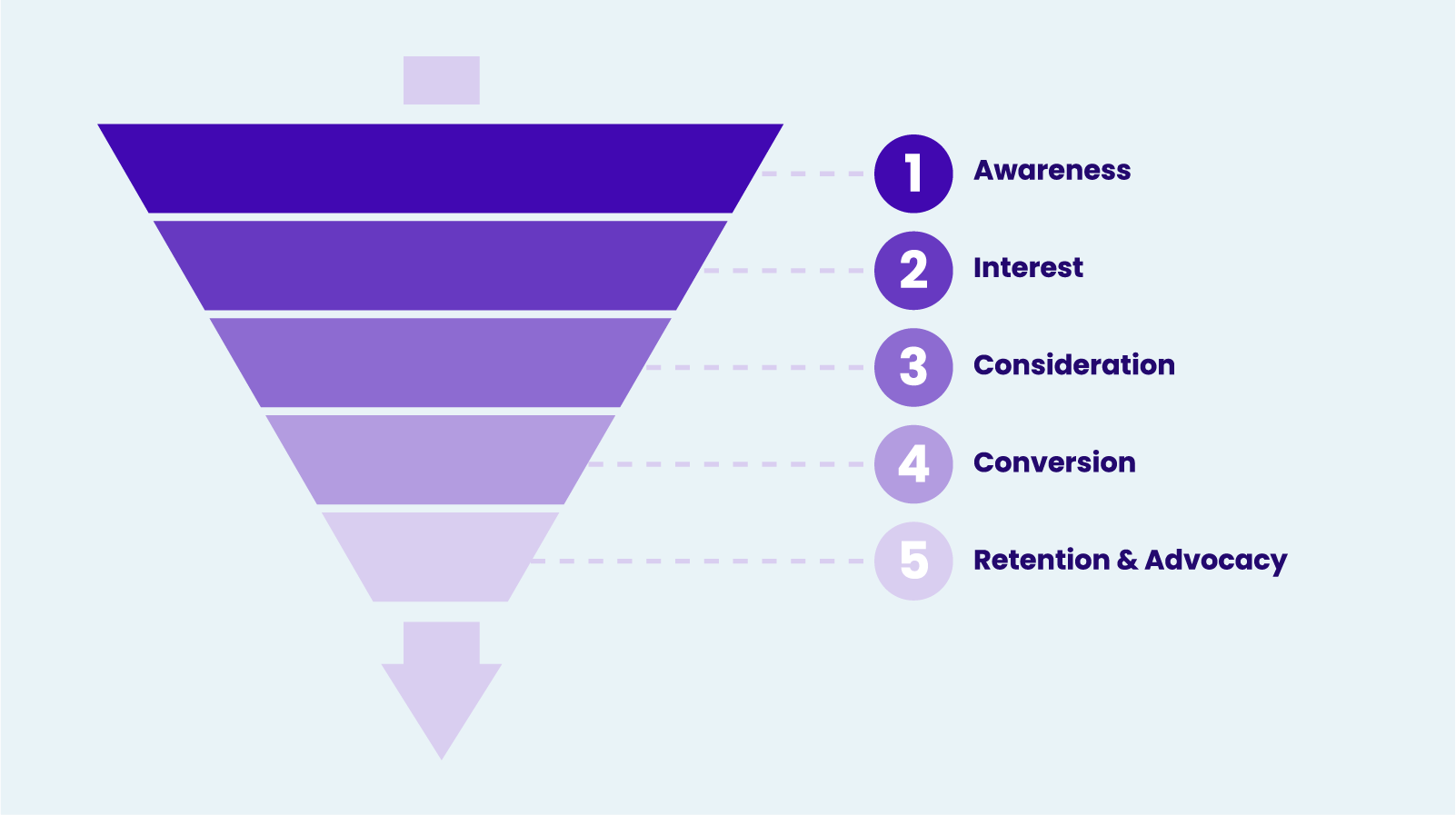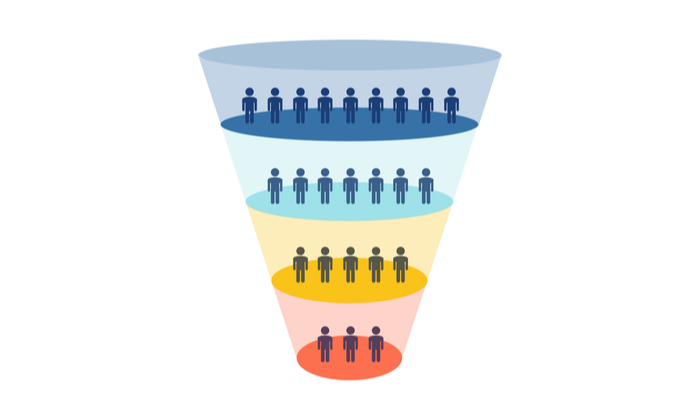What Does a B2B Marketing Funnel Really Look Like?

By Nick Nelson
The concept of a marketing funnel is one of the core differentiators between B2B marketing and B2C marketing.
This audience-centered model creates a tangible and visual depiction of the long and complex nature of B2B purchase cycles, while also providing a framework for marketing teams to build their strategies around.
What is the B2B marketing funnel?
The B2B marketing funnel is a representation of the progressive stages that businesses and their decision makers go through when making a purchase. It is described as a funnel to portray the expected narrowing of an audience from the top point (broad awareness) to the bottom (converted customers).
Traditionally, the B2B marketing funnel has been divided into five categories.
Stages of the B2B marketing funnel
- Awareness: A company becomes aware of a problem, pain point, or opportunity that it needs to act on.
- Interest: The company begins to explore vendors and solutions capable of helping solve their challenges.
- Consideration: Buyers and decision makers within the company reach the point of actively evaluating and comparing potential solutions.
- Conversion: The company chooses your solution and becomes a customer.
- Retention & Advocacy: The post-purchase relationship continues with the goal of retaining, upselling, or building customer advocacy.
Marketers often use the marketing funnel as a way to categorize and position their content. For example, top-of-funnel (TOFU) content might be focused on building brand awareness and expanding visibility with your target audience.
Bottom-of-funnel content (BOFU) is usually more oriented toward warm prospects who are already familiar and more likely to take action.
B2B marketing funnel vs. B2B sales funnel
Although they are often used interchangeably, you might sometimes hear “marketing funnel” and “sales funnel” referenced in different contexts. Some companies distinguish the two models based on their specific functions.
A B2B sales funnel might look more like this:
- Prospecting
- Qualification
- Proposal
- Notification
- Closing
The two variations are fundamentally similar in that they narrow down a broad field of potential customers into a more qualified set and eventually convert some of this set into won customers.
“79% of marketing leads never convert into sales due to a lack of lead nurturing.” (WifiTalents)
Why the top of the funnel matters
Historically, B2B marketers have had an understandable tendency to focus overwhelmingly on the lower part of the funnel. They are under pressure to drive and prove results, and the bottom of the funnel is where marketers can demonstrate their most direct revenue impact.
However, it’s critical for B2B companies to recognize that the vast majority of their potential buyers, at any given time, are not actively in the market for their solution. Marketing only to the small fraction of people who …read more
Source:: Top Rank Blog










